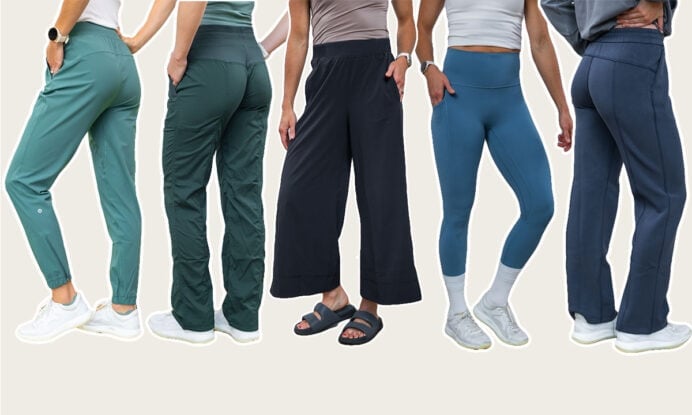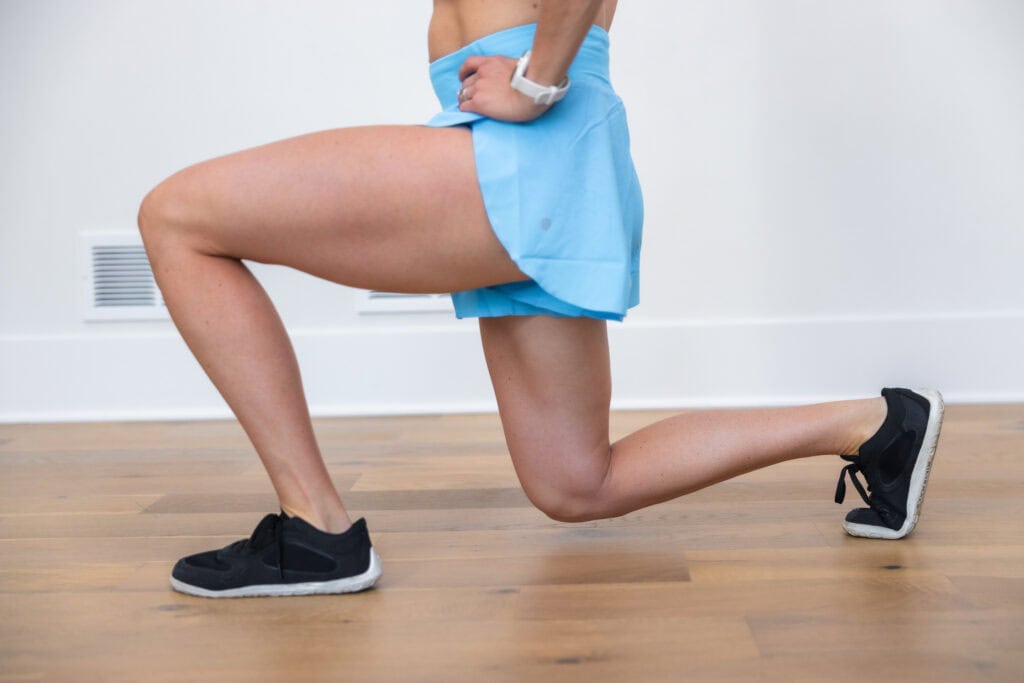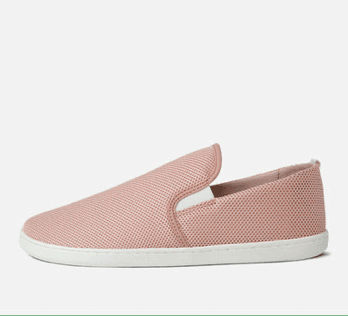

Barefoot Shoes For Women (Benefits + Fitness Trainer’s Review)
My goal is to wake up pain free every day. My first step in this journey has been changing my footwear. Our footwear and movement habits are significant contributors to our joint pain and muscular imbalances. Barefoot shoes can help you reclaim your natural biomechanics, improve posture, and ultimately lead a pain-free life.
Your joint pain is not going to get better unless you commit to doing something about it.
I receive emails and DMs every day from people who are struggling with joint pain. I didn’t know this until going through my own knee surgery recovery, but foot health is connected to both our knee and hip health.
Our feet have thousands of nerve endings, just like the palms of our hands. Those nerve endings send a ton of information to our brain, including how to direct movements (like the compound exercises we do in strength and HIIT workouts).
When we have a ton of cushion under our foot (like we do when we’re wearing a shoe, particularly a running shoe), it actually weakens our foot over time. This happens because our feet don’t have to work as hard. Whereas not having our foot in a shoe actually makes them stronger because they have to work more.
By strengthening the muscles in your feet and promoting natural movement patterns, training barefoot or wearing barefoot shoes can help prevent common injuries such as plantar fasciitis, shin splints, knee pain, and hip pain.

Live Expert Chat!
For more exclusive workout challenges, live workouts, nutrition chats, and direct support from our team, become a YouTube Member today.
Should Women Exercise Barefoot?
Yes! As a fitness trainer who has worked directly with a Muscle Activation and Barefoot Training specialist, I have experienced the transformative impact of barefoot training on my joints.
The number one benefit of training barefoot is the increased proprioception or your body’s ability to sense movement, action and location. Ultimately, this helps with motor control. For example, the more my feet can feel, the more they can tell my outer glute to activate when doing a lateral lunge. This will help me avoid hip pain during that movement.
Benefits of Barefoot Training:
- Improved Foot Strength and Flexibility. Encourages the natural movement of your feet, allowing your muscles, tendons, and ligaments to work as they were designed to.
- Better Balance. Enables better ground feel and proprioception, allowing you to have a more stable and balanced stance.
- Natural Posture and Alignment. Promotes a more natural walking and standing posture, reducing strain on your joints and muscles.
- Reduced Risk of Injury. Promotes more natural movement patterns which strengthens the muscles in your feet and lower legs.

Best Barefoot Shoes for Women:
If you are unable to train barefoot, I recommend Minnemals Barefoot Shoes or Feelgrounds Barefoot Shoes as an alternative to traditional training shoes. These shoes have a wide toe box that allow your toes to sit in their natural alignment. A lot of our balance and stability comes from our toes, which is harder with a narrow toe box. You want to look for the following in a barefoot shoe:
- Wide Toe Box: Shoe shaped to match your foot, rather than forcing your foot to the shape of a narrow box shoe.
- Thin and Flexible Sole: The Minnemals Shoes only have a 6 mm sole between your foot and the ground. This ensures the sensory receptors in your feet can feel the ground beneath them. The thin sole helps increase your stability, balance and strength.
- Zero Drop From Heel to Toe: Zero drop shoes have a flat sole with no height difference between the heel and toe. This allows your body to stand tall, keeping your foot parallel to the ground. Zero drop shoes mimic the natural position of your feet when you’re standing barefoot on a flat surface.
At first, barefoot shoes might feel too big — that is normal. If this is your first time trying barefoot shoes, it will take time for your foot to adjust to the feeling of a wide toe box.
If you’re looking to make a complete lifestyle change to barefoot shoes inside and outside of the gym, I personally love Feelgrounds Barefoot Shoes for everyday wear options. They have everything from boots, high-tops, low-tops, sandals, slip on’s and sneakers; and they even have kids barefoot shoes too!

Barefoot Training Shoes
DISCOUNT CODE: NML

Stylish Barefoot Shoes
Barefoot Shoes for Women FAQs
Wearing barefoot shoes promotes a more natural walking and standing posture, enhancing biomechanics to alleviate strain on the joints and muscles in your lower body. This can lead to fewer injuries and health problems and reduce the risk of harm from improper techniques or weakened feet.
When making the switch to training barefoot, I recommend transitioning gradually to allow your body time to adjust. Barefoot training has a compound effect that will take time and consistency. As your muscles and tendons become stronger, you can gradually increase the activities and intensity you do barefoot. I would start with strength training barefoot, then try barefoot training in your at home HIIT workouts.
Yes! Shoes that lack adequate support and have a ton of cushion can alter your body’s natural biomechanics. This means your daily movements, exercise, and walking and running patterns may be thrown off, leading to improper alignment which can cause joint pain. Switching to barefoot shoes with high quality materials allows your feet to move as nature intended, engaging muscles that are often neglected when confined to shoes.
Personally, I do not run in barefoot shoes and I definitely wouldn’t suggest you do either if you’re new to barefoot shoes. This is something you have to work up to if it’s a goal of yours, but I personally still run in standard running shoes.
More Review Posts
Favorite ProductsPin This Post: Barefoot Shoes for Women Review

This post includes affiliate links. I do make a small commission for products purchased using these links (at no additional cost to you). Thank you for supporting Nourish Move Love, making the content you see on this blog possible.





















I have been doing your workouts for a few years now and am SO excited to see you promoting barefoot shoes and barefoot training! I’ve been in barefoot shoes for about a year and a half now and have struggled with the conflict of watching the trainers I admire to help me get physically stronger wearing shoes that are seemingly so terrible for their feet and balance. Love, love, love that you are promoting a more holistic approach to what you do and how you help us on our journeys to be strong mommas like you!
Hi Mary! I am so glad to hear this! It’s been great to learn about the benefits of barefoot training, and I have personally found it to be SO helpful. Thanks for following along! -Lindsey